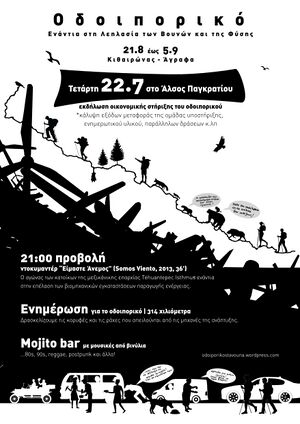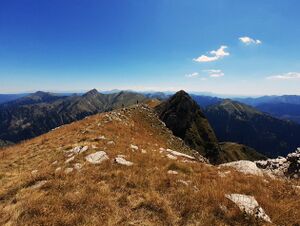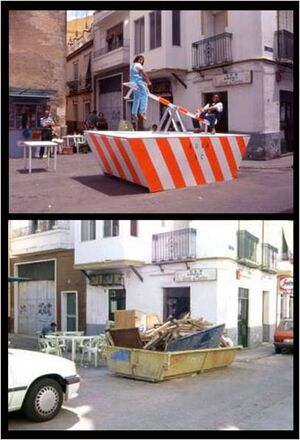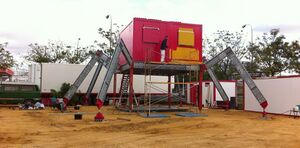Democratic Landscape Transformation 2023 - Team 4: Difference between revisions
Ola23team4 (talk | contribs) |
Ola23team4 (talk | contribs) |
||
| Line 92: | Line 92: | ||
Jan Gehl's human-centered approach to urban planning and design, which prioritizes pedestrian focus, public life, human scale, observation and analysis, placemaking, sustainable and healthy cities, and long-term engagement, resonates with the demands of the Gezi Park movement. Gehl's principles align with the movement's goals of preserving green spaces, promoting public participation, and creating inclusive and sustainable urban environments that prioritize the well-being and needs of people. | Jan Gehl's human-centered approach to urban planning and design, which prioritizes pedestrian focus, public life, human scale, observation and analysis, placemaking, sustainable and healthy cities, and long-term engagement, resonates with the demands of the Gezi Park movement. Gehl's principles align with the movement's goals of preserving green spaces, promoting public participation, and creating inclusive and sustainable urban environments that prioritize the well-being and needs of people. | ||
'''4. Role play - Devendra Kumar - Centre for science and villages''' | '''4. Role play - Devendra Kumar - Centre for science and villages''' - Role play - Centre for science and villages plays an important role in preserving the local techniques of the region and improving it with the change in requirements. | ||
They deal with a number of challenging projects that help people to achieve experimental buildings with all the necessary services. They are growing as a team and involving more elements in their curriculum which is helping modern day designers to work with them. | |||
or science and villages plays an important role in preserving the local techniques of the region and improving it with the change in requirements. | |||
[[File:Santiago Cirugeda .jpg|thumb|cirugeda ]] | [[File:Santiago Cirugeda .jpg|thumb|cirugeda ]] | ||
Revision as of 11:38, 5 July 2023
>>> Back to working group overview
>>> Back to seminar reading list
>>> go to the Editing Help
Background of your team
- Please write a few words about your team.
- Which linguistic and cultural perspectives are you representing? Which disciplinary backgrounds?
Vachla Theano: I hold a Degree in Architecture of the University of Thessaly, Greece. After my graduation I attended the Laboratory of Scenography and Costume Design at the Greek National Theatre. My area of interest is focused on architecture, scenography and illustration. Since 2018, I have worked in various architecture studios, with different specialization, such as Scenography, Protection, Conservation and Restoration of Cultural Monuments and Buildings. Μy recent absorption is architecture related more with public space, protection of natural landscapes and museology.
Chandni Thadani: I am an architect graduated from SMMCA, India in 2021. During my studies, I attended various seminars and hands-on workshops related to vernacular architecture practices. These workshops basically focus on construction materials that reduce the negative effects of buildings on the environment. I like to integrate architectural elements with nature.
Hüseyin Erten:I am an architect most recently I am a student of International Master of Landscape Architecture (IMLA) in Nürtingen-Geislingen University. Before start studying I had been working as an Architecture at the Four Seasons Hotel Sultanahmet Renovation in Sultanahmet, one of the most famous touristic locations in Turkey. I attended various of workshops and conferences to improve the field of communication, social, entrepreneurship with a wide perspective where I can improve myself in many areas of architecture and socially.
Your Landscape Democracy Manifestoes
Here you can add links to the manifestoes you have presented on April 26
- Vachla Theano - Visual Manifesto: https://drive.google.com/file/d/1onofZVuGnTgsEP68p3iu_fdF5hX6U5ld/view?usp=sharing
- Chandni Thadani - Manifesto link: https://drive.google.com/drive/u/0/my-drive
- Hüseyin Erten- Manifesto link:https://drive.google.com/file/d/1WjKw8-lpyQEj-zuwOiOSbT-gyv9o5MlG/view?usp=sharing
- add link here
Examples of Landscape Activism
In the session on May 10 you will discuss examples of landscape activism from your own contexts. You can share the examples in this section (link, image and/or short explanation).
- Vachla Theano - Pilgrimage and Travelogue:
My example of design activism is a Pilgrimage that took place in 2020, in Greece and It's been such a pleasure to be part of this. The Trekking (314km) was a campaign against the looting of the mountains and of nature and started from Mount Kitheronas on August 21 and ended up in Agrafa Mountains on the 5th of September 2020. It was a symbolic act of protest against the predatory exploitation of common natural resources in the name of “development”, it was a struggle for life itself.
During the last years, more and more wind power lobbies claim for public land, through simplified processes of licensing, without essential installation planning. Participation of citizens is limited to short - time consultations, even during the pandemic period and public holidays. Moreover, residents that react, journalists and the media face mass persecutions. The idea of this initiative was born under the shadow of the pandemic and confinement and was spread by word of mouth. Participants did not know each other at first but through open meetings on a weekly basis, they came closer and managed to organize the travelogue (food supplies, transportation, routes, intersection points of the specific routes with road network, access to potable water, spots for camping). In the trekking took place around 30 people of different age, almost all from Greece. During this, they had the chance to meet local people from the mountain region, share thoughts and exchange ideas and ways of collective action. This was very encouraging both for the participants and mainly for the residents, as the vast majority of the population is elderly people unable to act against the planned installations of wind stations.
The route and the planned installations (site of the Travelogue):
https://odoiporikostavouna.files.wordpress.com/2020/06/ola_oi_epemvaseis.jpg
Here you can watch the documentary of the Travelogue with English subtitles: https://www.youtube.com/watch?v=imLwVCZ3ogM&t=2517s that was produced by the team of this initiative. Additionally, here you can find a link for the 2021 Diary of the Travelogue that was printed after the completion of the project. It includes photographs, information related to the initiative and the biodiversity of the regions that we visited, in order to disseminate the importance and beauty of these areas and allocate the funds to relevant activities or judicial expenses for people that fight for the protection of the natural public land.
Diary: https://we.tl/t-yokUUt0iwY
*All the material was produced by the people that participated in this, working collaboratively.
- Chandni Thadani - Visit to Centre of Science for Villages in Wardha (CSV), India
During my third year in bachelors studies, my college organized a site visit to CSV for our elective training on Appropriate Technology. The CSV acts as a center for the transfer of technology and be a bridge between the portals of National Laboratories and doors of the Rural Mud Huts. CSV works to salvage traditional sciences through appropriate technology transfer and introduction of practical and innovative scientific products for rural areas that benefit both the people and the environment. CSV also provides training to artisans, Self Help Groups, micro-entrepreneurs and development practitioners on alternate technologies.
The visit to CSV was to understand the actual meaning of local or rural architecture and how it works. The lectures, factory visit, and hands-on practice also helped to understand their mechanisms. Their team consists of trainers, workers, and research associates. They also believe in community development and women empowerment. The objective of the visit was to introduce the same principles in our design projects. I was glad to be a part of this elective.
The link for my presentation is: https://drive.google.com/drive/u/0/my-drive
The following is the link of CSV to understand how it works-
Hüseyin Erten- Preventing to Salda Lakes Soil
The proposal to create a national park at Salda Lake is an act of design activism aimed at preserving the lake's unique natural beauty and enabling people to experience this natural heritage. This project aligns with design activism principles such as environmental conservation, public participation, and human-centered urban environments. The national park should serve as a model for sustainability, ecological balance, and biodiversity. It should prioritize community engagement and consider the ideas and needs of local residents. By encouraging a deeper connection with nature, the Salda Lake national park can promote sustainable lifestyles and environmental awareness. It should enhance access to natural spaces and foster a sense of conservation among individuals. Creating a national park at Salda Lake is a step towards preserving natural beauty, fostering community participation, and promoting a healthy and balanced environment.
https://drive.google.com/file/d/1qU021pt7w4f0unimmi4r902rWz4JS9f7/view?usp=sharing
https://www.bbc.com/turkce/live/haberler-turkiye-49149222
The Role Play,
In the session on May 17 you will present a small role play with your team. Please add here a short reflection on what you have learned from this play. The short list of landscape democracy 'movers and shakers' can be found here
- Vachla Theano
1. Role - play: Santiago Cirugeda - Pilgrimage and Travelogue
Concept: Radio show "Landscapes of Democracy" - invited person Santiago Cirugeda.
References:
https://www.spatialagency.net/database/santiago.cirugeda
https://architectuul.com/architect/santiago-cirugeda
https://recetasurbanas.net/vidoes/
https://www.researchgate.net/publication/331206539_Do_Experiences_With_Nature_Promote_Learning_Converging_Evidence_of_a_Cause-and-Effect_Relationship
2. Role - play: Santiago Cirugeda - Gezi Park
As Santiago Cirugeda, a social architect, questioning the limits of legality and defining processes for social action to improve the city and tackle some of the problems facing its residents, i would say that my contribution to Gezi Park movement would be the "taking back the streets". Through provocative urban strategies, i would suggest to occupy public spaces using containers and dumpsters, on which we could build a temporary public common land. Subverting the legislation and using it in favor of the citizens and of community, we can protect the public space from getting commodified and appropriate it, according to our needs, the needs and desires of the residents-citizens-pedestrians.
-Hüseyin Erten
3. Role - play Jan Gehl- Gezi Park
Jan Gehl's human-centered approach to urban planning and design, which prioritizes pedestrian focus, public life, human scale, observation and analysis, placemaking, sustainable and healthy cities, and long-term engagement, resonates with the demands of the Gezi Park movement. Gehl's principles align with the movement's goals of preserving green spaces, promoting public participation, and creating inclusive and sustainable urban environments that prioritize the well-being and needs of people.
4. Role play - Devendra Kumar - Centre for science and villages - Role play - Centre for science and villages plays an important role in preserving the local techniques of the region and improving it with the change in requirements.
They deal with a number of challenging projects that help people to achieve experimental buildings with all the necessary services. They are growing as a team and involving more elements in their curriculum which is helping modern day designers to work with them.
or science and villages plays an important role in preserving the local techniques of the region and improving it with the change in requirements.
>>> All information on the phase B activities is compiled in this PDF
Readings, concepts and definitions
- Start: April 5, 2023
- Due: July 5, 2023
Working in your group, express your personal understanding of the relation of landscape and democracy in the form of a concept map with linking words or any other diagrammatic representation. Please make your maps very visual and not just verbal. Think critically about why one map differs from another
About concept mapping
Before starting the exercise you can read this article by Joseph D. Novak & Alberto J. Cañas about Theory Underlying Concept Maps and How to Construct and Use Them. This paper gives a good explanation of how concept maps are conceived and developed.
You can use any tool you like for producing your concept map. However, since the result needs to be submitted digitally we recommend the following open source software for producing your maps:
- Cmap Tools >>> you can also work with your group on the Cmap cloud doing a shared map
- VUE - The Visual Understanding Environment
Please add your concept map(s) here
- Possible format: JPG (for wiki upload) or link to any other resource
- You may add one map per team member or an integrated one
- add as many additional materials as you need
- Addyourfilename.jpg
one caption per author
- Addyourfilename.jpg
one caption per author
- Addyourfilename.jpg
one caption per author
- Addyourfilename.jpg
one caption per author
Please finish with a short reflection
- What are the similarities and differences in your team regarding your understanding of what democratic landscape transformation is?
- Our group comes from different parts of the world that gives them a wide variety of perspectives. We differ with ideas of landscape democracy because of our different experiences about life and cultures.
- We try to relate and review our ideas to make each other understand. Some ideas are related to social aspects while some incline towards developmental parameters. But there is one thing common that includes the idea of contributing towards sustainable development and making the world a better place.
- In how far did the seminar lectures and readings help you to clarify this?
- The different partners or the participants of the seminars have their own achievements in their life. Hearing their ideas about landscape democracy helps us to understand what things we want to change in our environment and what are the critical elements that are needed to be taken care of.
- What will you take home from this seminar?
- We can express our ideas in a lot of methods and it doesn't have to be actually related to the key words. We can learn from the experiences of the other people and try to evolve our understanding.




